Archaeology & History
Archaeologists Have Unearthed a 2,000-Year-Old Roman Basilica in Israel That May Have Been Built by Herod the Great
See stunning images of the building.
See stunning images of the building.

Sarah Cascone

Archaeologists in Israel have unearthed the largest ancient Roman basilica in the nation, a 2,000-year-old building dating to the reign of the Biblical figure Herod the Great, who may have built it.
“The writings of the historian Josephus mention Herod’s construction in the city of Ashkelon and list fountains, a bathhouse, and colonnaded halls,” Rachel Bar-Natan, Saar Ganor, and Federico Kobrin, excavation directors working with the Israel Antiquities Authority, said in a statement.
The building was found during renovations to Tel Ashkelon National Park, Israel’s oldest national park, and appears to match Josephus’s description. It has a central hall and two side halls featuring rows of marble columns and capitals.
Coins dating to Herod’s rule found on the site also support this dating, and the theory that Herod ordered its construction.
Archaeologists believe that original 1st-century construction was renovated in the 2nd or 3rd century during the rule of Emperor Septimius Severus, adding a small odeon, or theater, as well as the marble elements.
Imported from Asia Minor, those roughly 200 objects include sculptures of the victory goddess Nike, the Titan Atlas, and the Egyptian goddess Isis, depicted as Tyche.
“You can see in your mind’s eye ships laden with marble, sailing to Ashkelon,” Ganor told Haaretz.
The British archaeologist John Garstang originally discovered the basilica during an expedition with the Palestinian Exploration Fund in the 1920s, but the site was then reburied. Excavations resumed from 2008 to 2012, and again in 2016, according to the Jerusalem Post.
Although modern basilicas are usually churches, that would not have been the case in ancient times. Roman basilicas were civic buildings at the center of public life, used for commerce, court proceedings, and festivals, among other activities. The architectural form was later adopted by Christian builders.
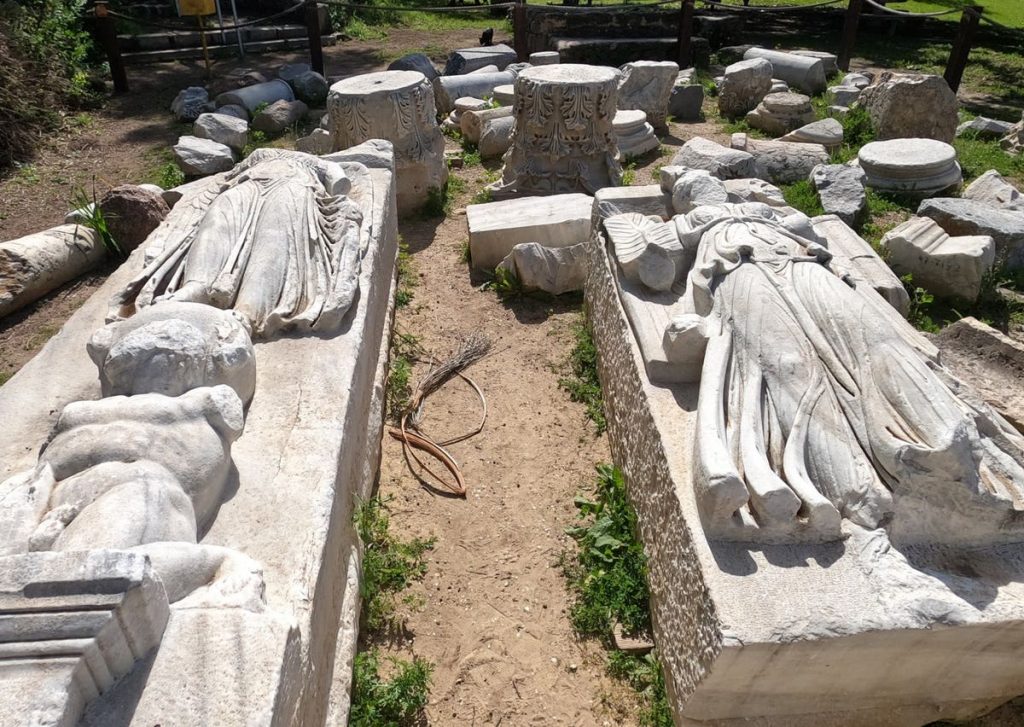
Statues of the goddesses Nike and Tyche, or Isis, at the Roman basilica in Tel Ashkelon National Park, Israel. Photo by Yaniv Cohen, courtesy of the Israel Nature and Parks Authority.
The Ashkelon basilica was abandoned following a devastating earthquake in 363 A.D. Marble from the building was later reused in new buildings under the Abbasid (750–1258 A.D.) and Fatimid (909–1171 A.D.) caliphates. Evidence suggests that additional marble was removed from the site during the Ottoman period and used as paving stones.
“The best of it was taken to Jaffa,” Ganor added.
Israel plans to open the ancient building to the public. The Israel Antiquities Authority, the Israel Nature and Parks Authority, the Ashkelon Municipality, and the Leon Levy Foundation are conducting a preservation and restoration project of the site.
They will re-erect 15 to 17 of the roughly 40-foot-tall pillars in the ancient colonnade, giving visitors a better sense of what the basilica would have looked like in ancient times.
See more photos of the site below.
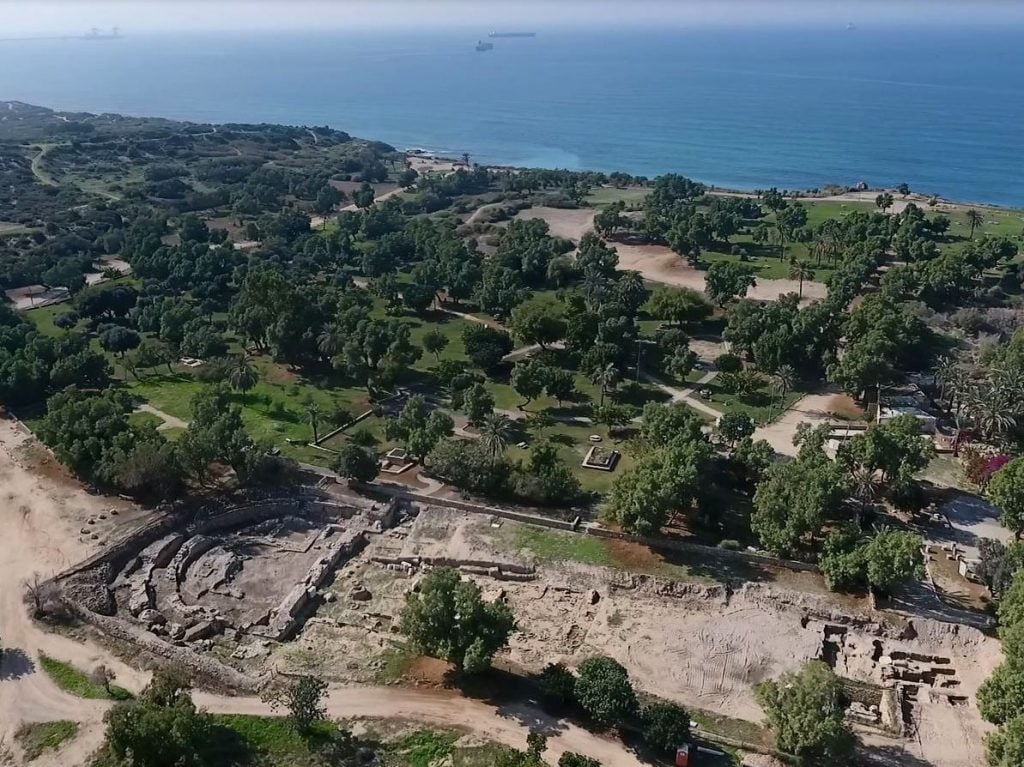
Aerial view of the Roman basilica in the Tel Ashkelon National Park, Israel. Photo by Emil Aladjem, courtesy of the Israel Antiquities Authority.
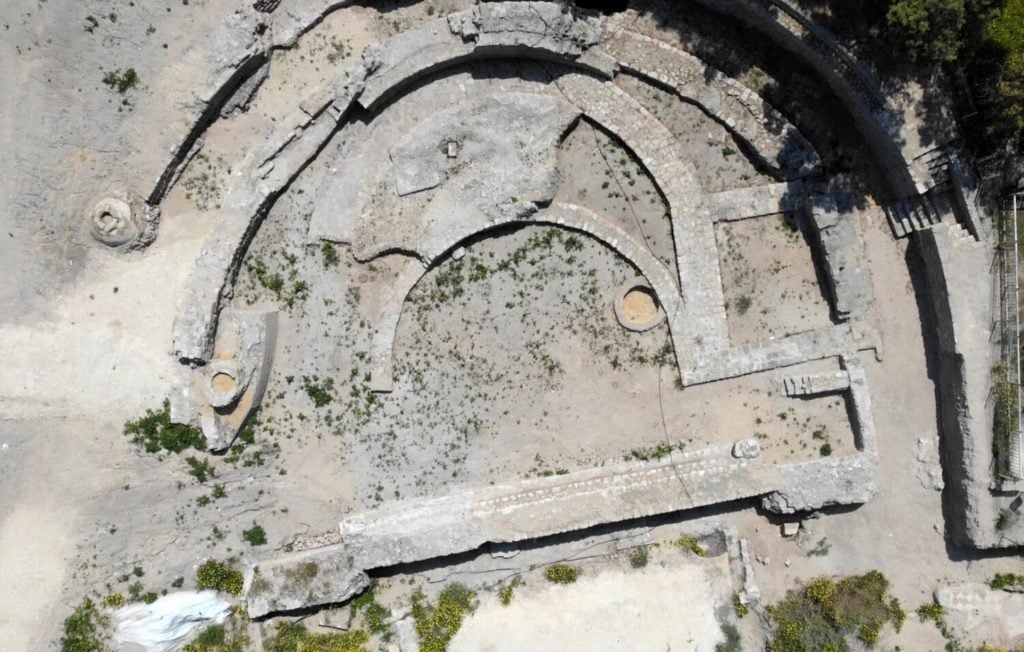
Aerial view of the Roman basilica in Tel Ashkelon National Park, Israel. Photo by Tomer Ofri, courtesy of the Israel Nature and Parks Authority.
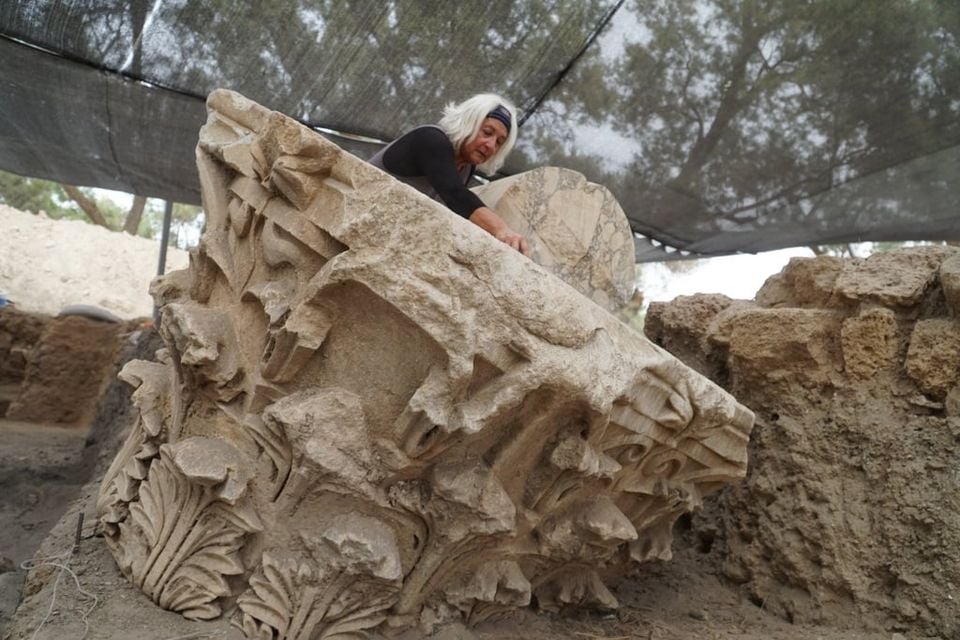
A woman with a large capital at the Roman basilica in Tel Ashkelon National Park, Israel. Photo courtesy of the Israel Antiquities Authority.
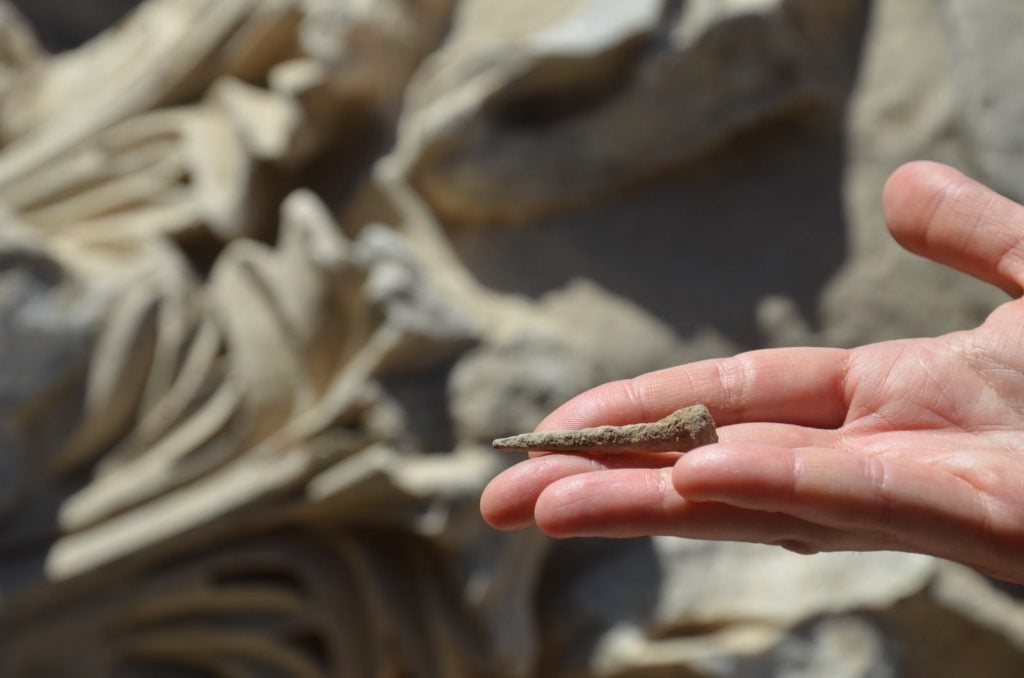
An ancient artifact at the Roman basilica in Tel Ashkelon National Park, Israel. Photo courtesy of the Israel Antiquities Authority.
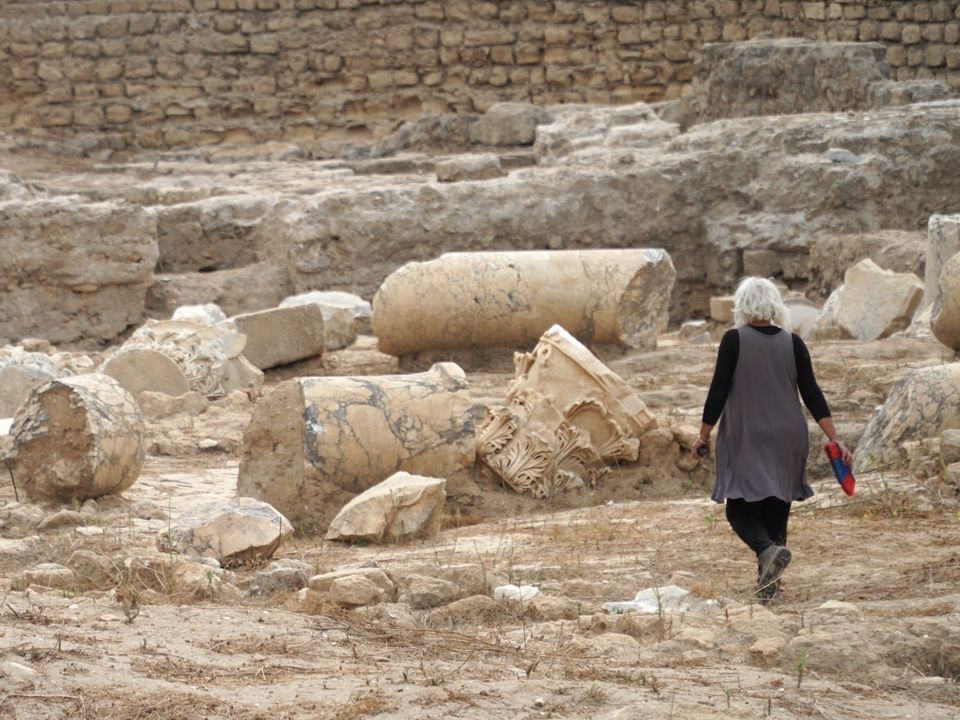
Marble at the Roman basilica in Tel Ashkelon National Park, Israel. Photo courtesy of the Israel Antiquities Authority.
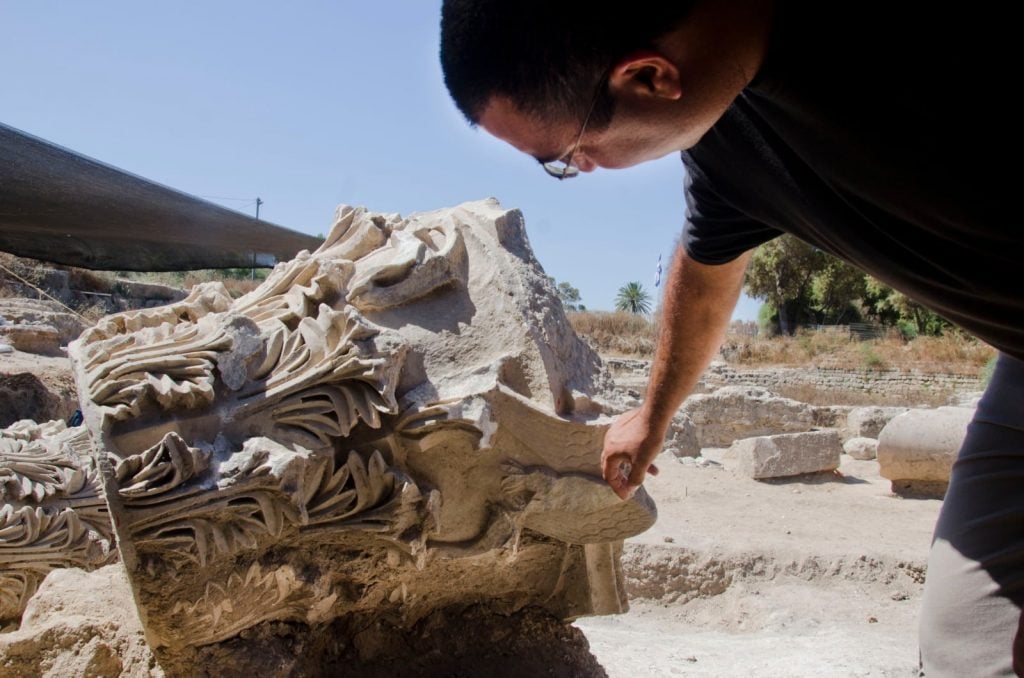
Archaeologist Saar Ganor with a capital in Tel Ashkelon National Park. Photo by Yoli Shwartz courtesy of the Israel Antiquities Authority.
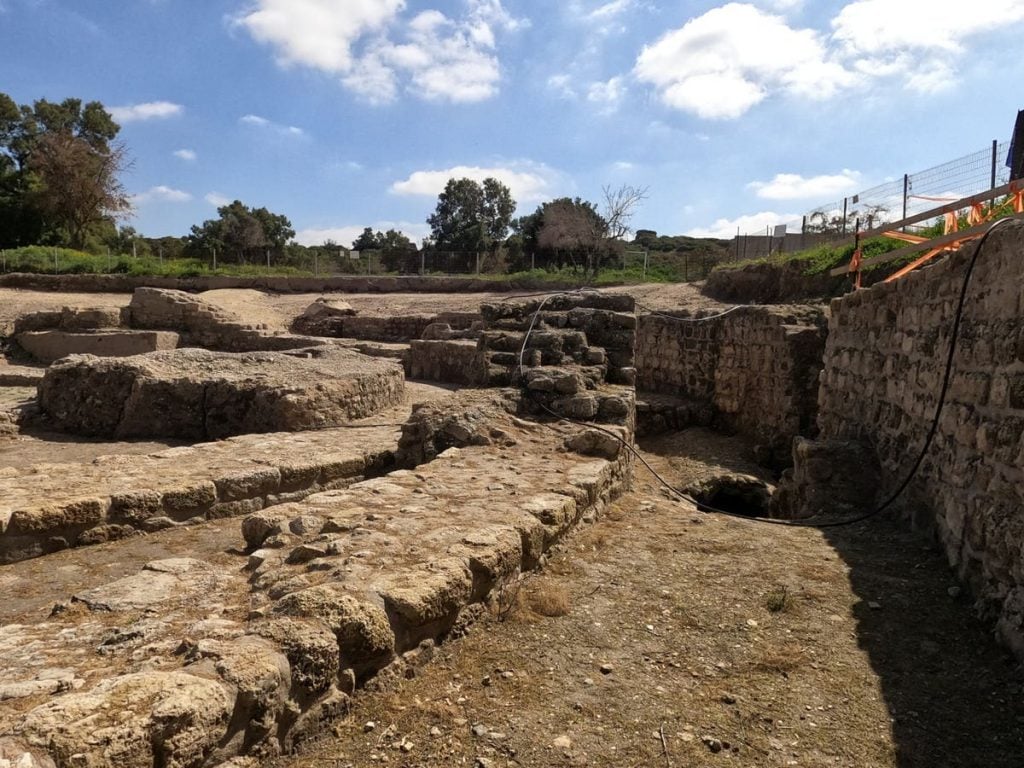
The odeon in Tel Ashkelon National Park, Israel. Photo by Yaniv Cohen, courtesy of the Israel Nature and Parks Authority.
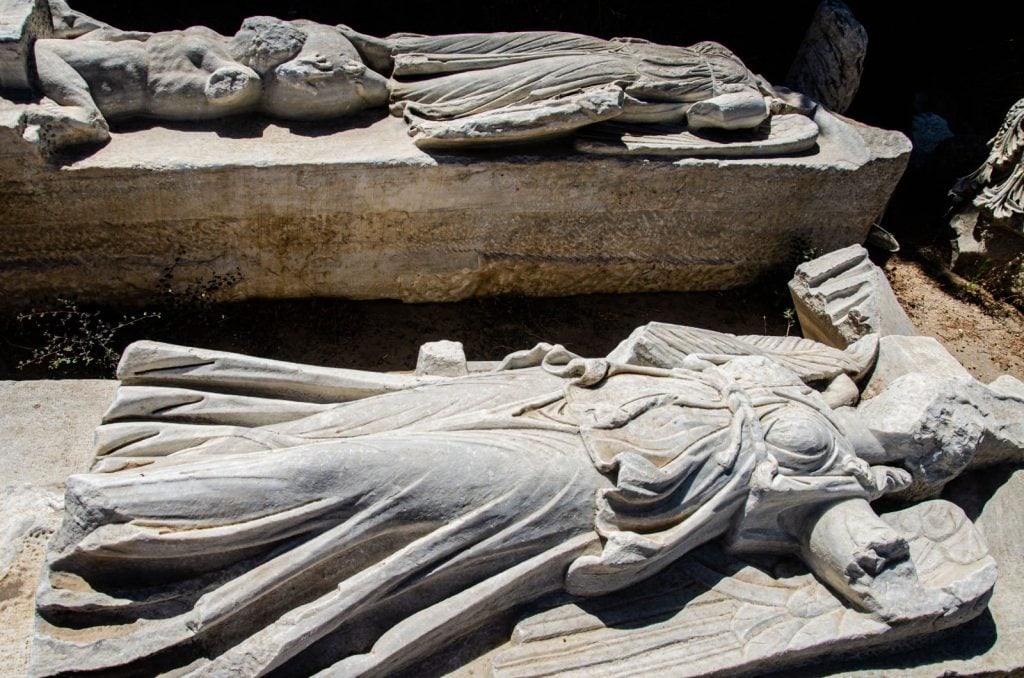
Statues of the goddesses Nike and Tyche, or Isis, at the Roman basilica in Tel Ashkelon National Park, Israel. Photo courtesy of the Israel Antiquities Authority.
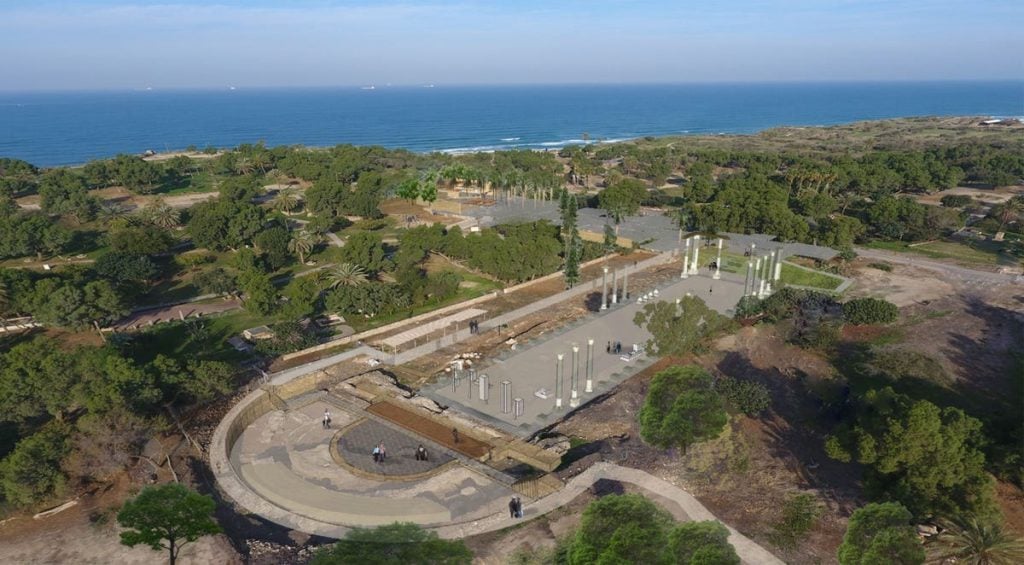
A rendering of what the basilica will look like after restoration. Photo by Emil Aladjem, courtesy of the Israel Antiquities Authority.